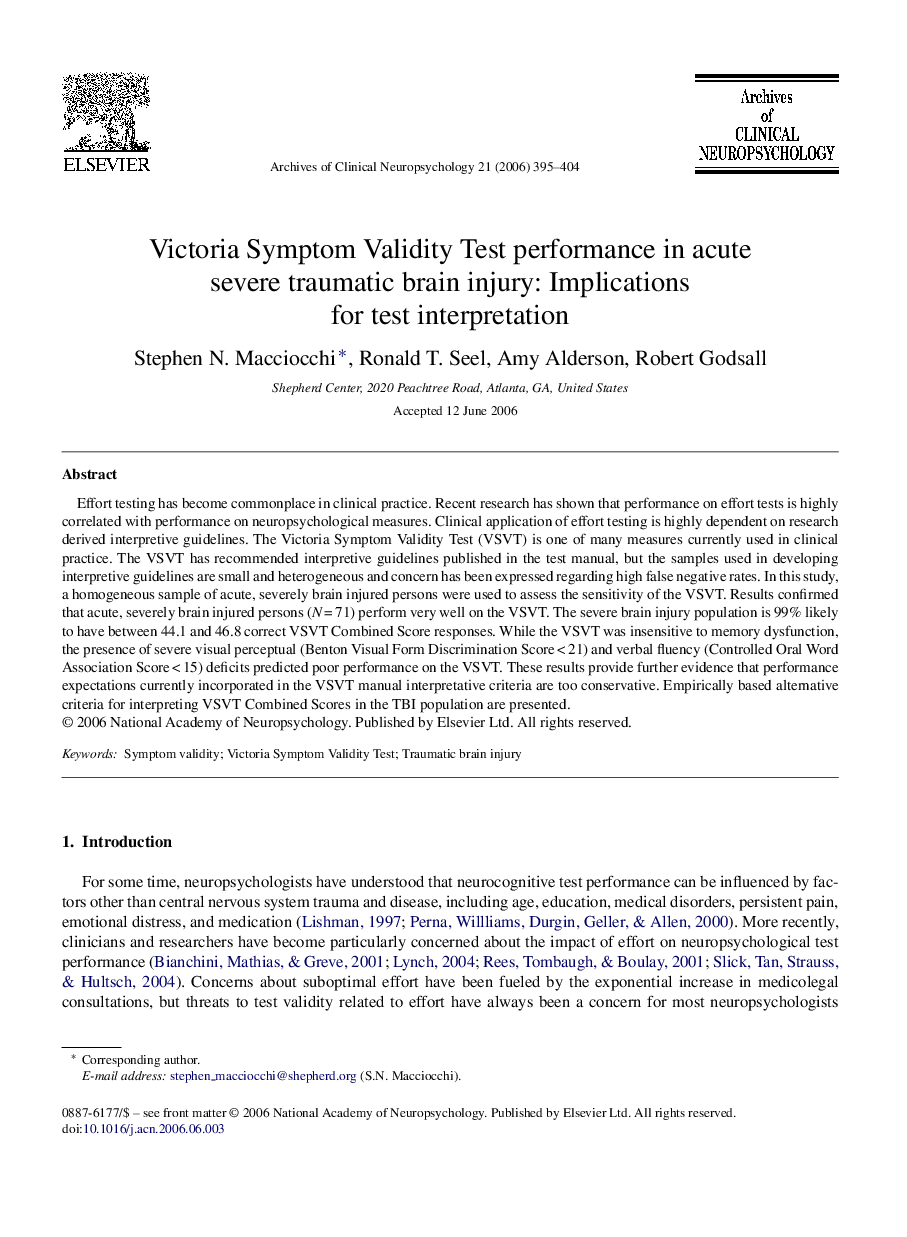| Article ID | Journal | Published Year | Pages | File Type |
|---|---|---|---|---|
| 901089 | Archives of Clinical Neuropsychology | 2006 | 10 Pages |
Effort testing has become commonplace in clinical practice. Recent research has shown that performance on effort tests is highly correlated with performance on neuropsychological measures. Clinical application of effort testing is highly dependent on research derived interpretive guidelines. The Victoria Symptom Validity Test (VSVT) is one of many measures currently used in clinical practice. The VSVT has recommended interpretive guidelines published in the test manual, but the samples used in developing interpretive guidelines are small and heterogeneous and concern has been expressed regarding high false negative rates. In this study, a homogeneous sample of acute, severely brain injured persons were used to assess the sensitivity of the VSVT. Results confirmed that acute, severely brain injured persons (N = 71) perform very well on the VSVT. The severe brain injury population is 99% likely to have between 44.1 and 46.8 correct VSVT Combined Score responses. While the VSVT was insensitive to memory dysfunction, the presence of severe visual perceptual (Benton Visual Form Discrimination Score < 21) and verbal fluency (Controlled Oral Word Association Score < 15) deficits predicted poor performance on the VSVT. These results provide further evidence that performance expectations currently incorporated in the VSVT manual interpretative criteria are too conservative. Empirically based alternative criteria for interpreting VSVT Combined Scores in the TBI population are presented.
